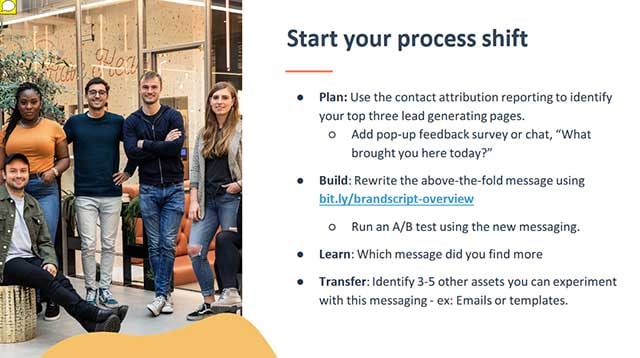Building a Peak Performing Website in 2023: Key Strategies and Tools
- Home
- Building a Peak Performing Website in 2023: Key Strategies and Tools
Create a Peak-Performing Website
Building a peak-performing website is crucial for businesses and individuals looking to establish a strong online presence and drive traffic, engagement, and conversions. In 2023, website performance has become more critical than ever, with increasing competition, evolving user expectations, and rapidly changing technology trends such as the rise in AI-generated content.
To create a peak-performing website in 2021, it is essential to focus on key elements such as user experience, website speed, search engine optimisation (SEO), website security, and design and functionality. By optimising these elements, website owners and developers can improve website performance, enhance user engagement and satisfaction, and achieve higher search engine rankings and conversion rates.
In this digital age, a website is often the first point of contact for potential customers or clients and can make a significant impact on their perception of your brand or business. As such, it is critical to ensure that your website is not only visually appealing but also fast, secure, and easy to use. By investing in the right tools, strategies, and best practices, you can create a website that is not only peak-performing but also able to keep up with the ever-changing digital landscape.
The World of Web Design is Shifting
The world of web design is shifting rapidly, and businesses and individuals must adapt to keep up with the changing trends and technologies. This shift is driven by a combination of factors, including changes in culture, process, and technology.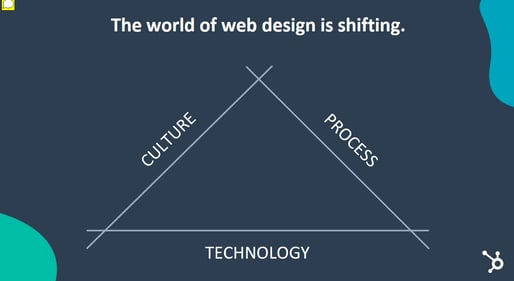
Culturally, web design has become more diverse and inclusive, reflecting the changing demographics of internet users worldwide. As a result, web designers must consider the needs and preferences of a wider range of audiences, including those with disabilities, non-native speakers, and different cultural backgrounds.
In terms of process, web design has become more streamlined and agile, with a focus on user-centred design and iterative development. This approach allows designers and developers to create websites that are not only visually appealing but also functional, efficient, and responsive to user feedback.
Technologically, web design has evolved to incorporate new tools and techniques, such as artificial intelligence, chatbots, and voice search. These technologies enable designers and developers to create websites that are more interactive, personalized, and accessible and can adapt to the changing needs and preferences of users.
The shift in the world of web design presents both opportunities and challenges for businesses and individuals. By embracing the changing culture, process, and technology of web design, businesses and individuals can create websites that are not only peak-performing but also relevant, engaging, and accessible to a diverse range of audiences.
Traditional Culture vs Modern Culture
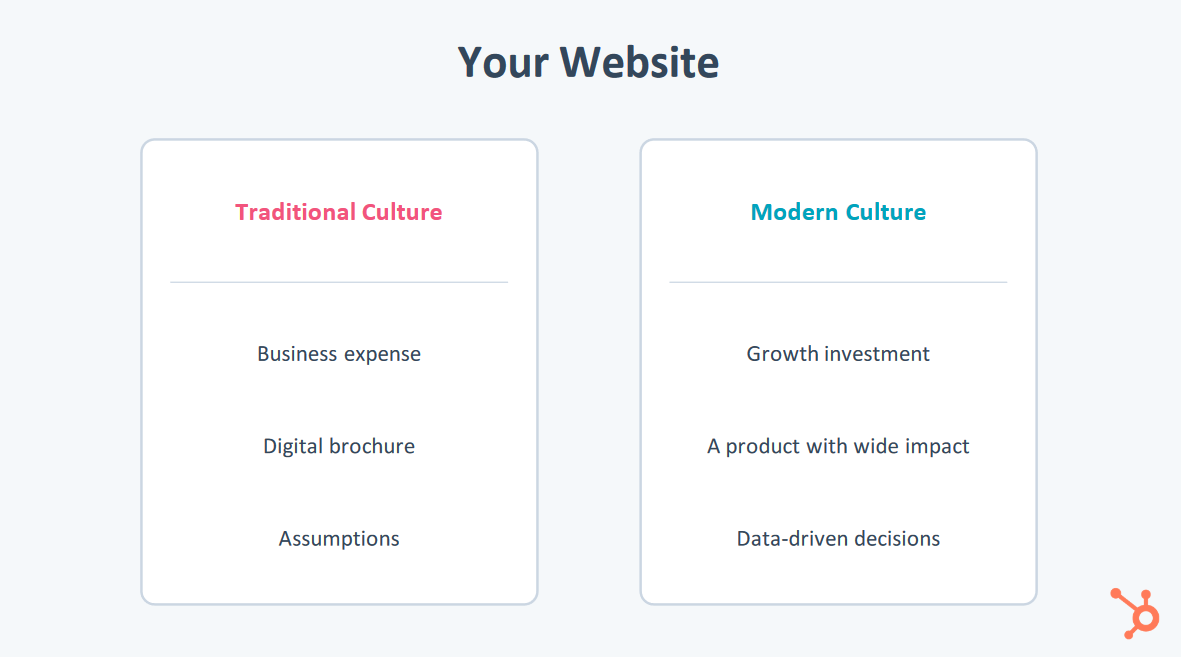
When it comes to building a website, there are two primary cultural approaches that businesses can adopt: traditional culture and modern culture. These approaches differ in terms of their focus, values, and assumptions, and can have a significant impact on website design, development, and success.
Traditional culture is characterised by a focus on business expenses, creating a digital brochure, and making assumptions about user needs and preferences. Websites built with traditional culture tend to be static, outdated, and primarily focused on providing information rather than engaging with users. This approach assumes that the website is simply an expense to the business, rather than an investment in growth, and is not viewed as a key driver of business success.
In contrast, modern culture is characterised by a focus on growth investment, creating a product with a wide impact, and making data-driven decisions. Websites built with modern culture tend to be dynamic, interactive and focused on providing value to users. This approach assumes that the website is a key driver of business success and is viewed as an investment in growth rather than an expense. Websites built with modern culture tend to prioritise user needs and preferences and use data and analytics to make informed decisions about design, content, and functionality.
The Challenge: Start your culture shift
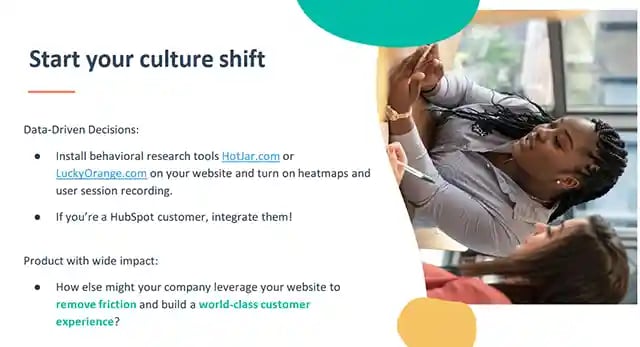
Expand your website’s impact
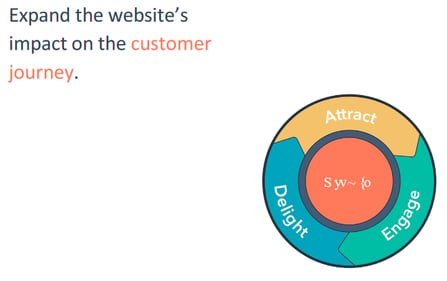 Expanding a website's impact on the customer journey is critical for businesses looking to drive growth and improve customer experience. By expanding a website's impact, businesses can engage customers at every stage of their journey, from awareness to advocacy. This requires a deep understanding of customer needs and behaviours, as well as the tools and strategies to deliver a personalized and relevant experience.
Expanding a website's impact on the customer journey is critical for businesses looking to drive growth and improve customer experience. By expanding a website's impact, businesses can engage customers at every stage of their journey, from awareness to advocacy. This requires a deep understanding of customer needs and behaviours, as well as the tools and strategies to deliver a personalized and relevant experience.
To expand a website's impact, businesses should focus on creating content and experiences that meet the needs of customers at each stage of their journey. This could include developing targeted landing pages for specific customer segments, providing personalised product recommendations, or creating interactive content that engages and educates customers.
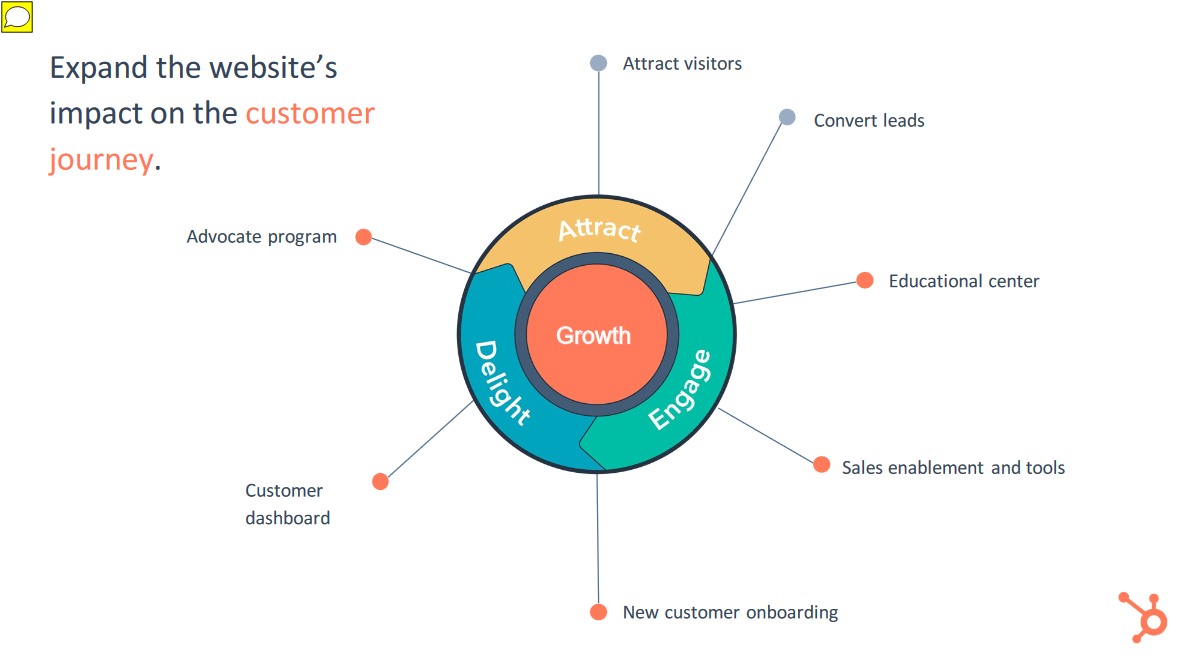
Businesses should also leverage data and analytics to track customer behaviour and optimise their website accordingly. This could involve A/B testing different page layouts, analysing user engagement metrics, or using heatmaps to understand how customers interact with different elements of the website.
Traditional Processes vs Modern Processes
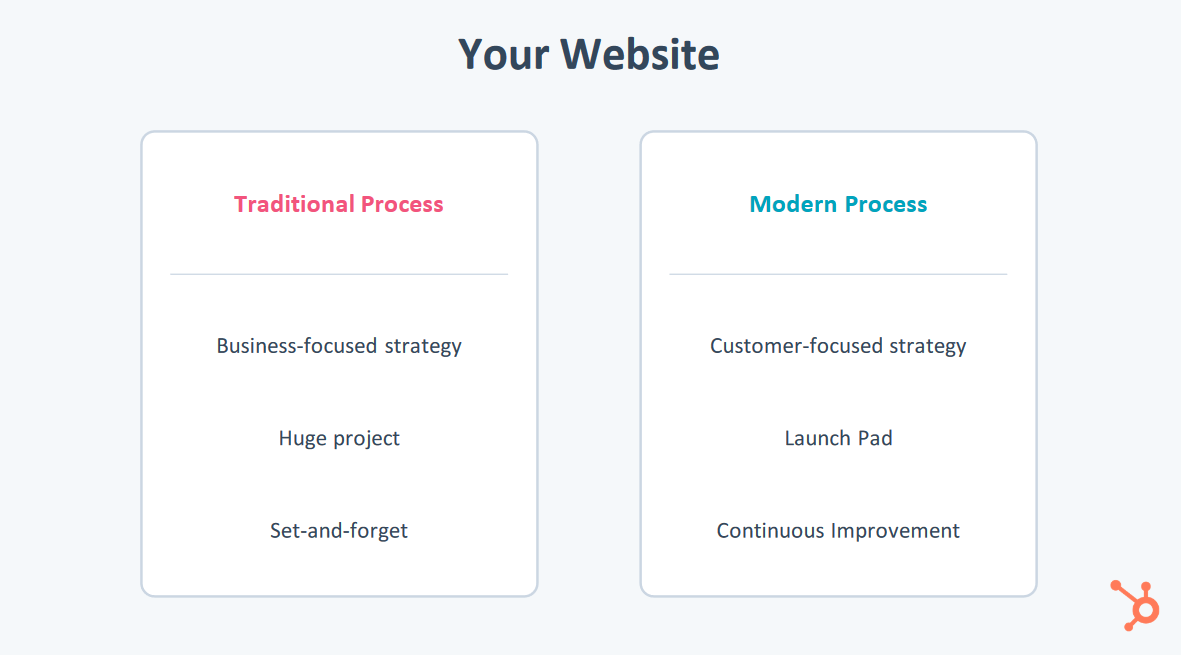
When it comes to building a website, there are two primary process approaches that businesses can adopt: traditional process and modern process. These approaches differ in terms of their focus, methodology, and objectives, and can have a significant impact on website design, development, and success.
The traditional process is characterised by a business-focused strategy, a huge project, and a set-and-forget mentality. Websites built with traditional processes tend to be treated as a one-time project, with little emphasis on ongoing updates, maintenance, or optimisation. This approach assumes that the website is a separate entity from the business and is not fully integrated into the business strategy.
In contrast, the modern process is characterised by a customer-focused strategy, a launch pad mentality, and a continuous improvement approach. Websites built with modern processes tend to be viewed as an integral part of the business strategy, with a focus on ongoing updates, testing, and optimization to improve user experience, engagement, and conversion rates. This approach assumes that the website is an ever-evolving asset that requires constant attention and improvement.
The modern process emphasises the importance of launching quickly with a "launch pad" site that can be continually optimised and improved over time. This approach allows businesses to gather feedback, data, and insights from users and make data-driven decisions about the design, content, and functionality of the site.
The Challenge: Start your process shift
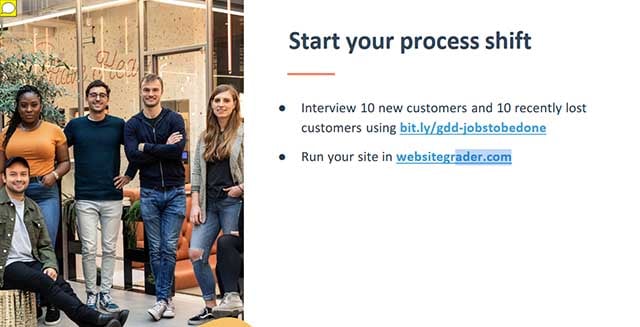
Traditional CMS vs Modern CMS
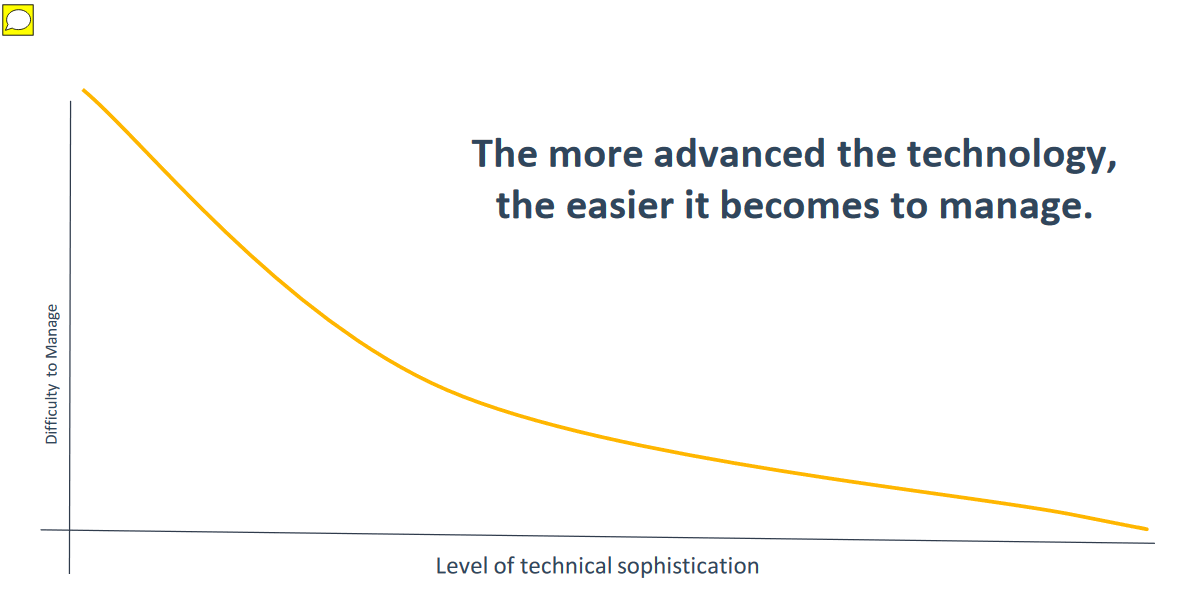
When it comes to building a website, there are two primary content management system (CMS) approaches businesses can adopt: traditional CMS and modern CMS. These approaches differ in terms of their maintenance, security, flexibility, and reporting capabilities, and can have a significant impact on website design, development, and success.
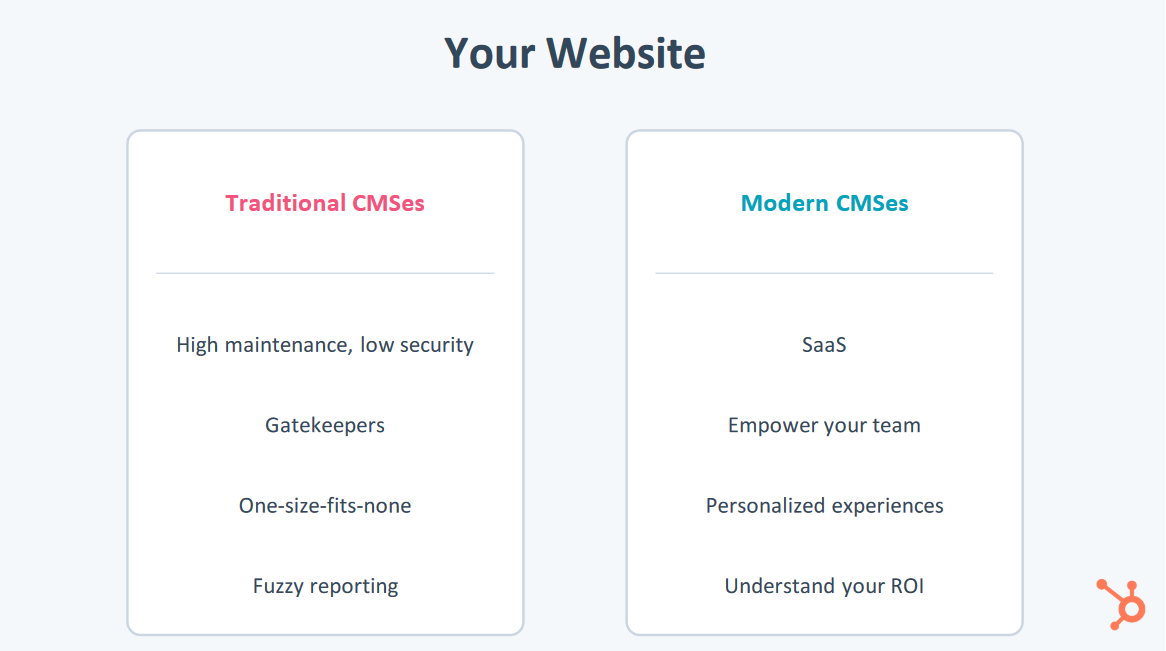
Traditional CMS is characterised by a high-maintenance and low-security approach, gatekeepers, one-size-fits-none, and fuzzy reporting. Websites built with traditional CMS tend to require a lot of manual updates and maintenance, which can be time-consuming and prone to errors. This approach also often requires gatekeepers or IT personnel to manage the CMS, which can slow down the content creation and publishing process. Additionally, traditional CMS often provide limited flexibility in terms of design and functionality, leading to one-size-fits-none websites that may not fully meet the needs of users. Finally, traditional CMS often have limited reporting capabilities, making it difficult to fully understand the impact of website content and engagement on business outcomes.
In contrast, modern CMS is characterised by a SaaS approach, empowering teams, personalised experiences, and comprehensive reporting capabilities. Websites built with modern CMS tend to be cloud-based and fully managed by the CMS provider, eliminating the need for manual updates and maintenance. This approach also allows businesses to empower their teams to create and publish content quickly and efficiently, without the need for gatekeepers or IT personnel. Modern CMS also provide greater flexibility in terms of design and functionality, allowing businesses to create personalized experiences that fully meet the needs of their users. Finally, modern CMS provide comprehensive reporting capabilities, allowing businesses to understand the impact of their website on business outcomes and make data-driven decisions about content and engagement.
The HubSpot CMS Hub
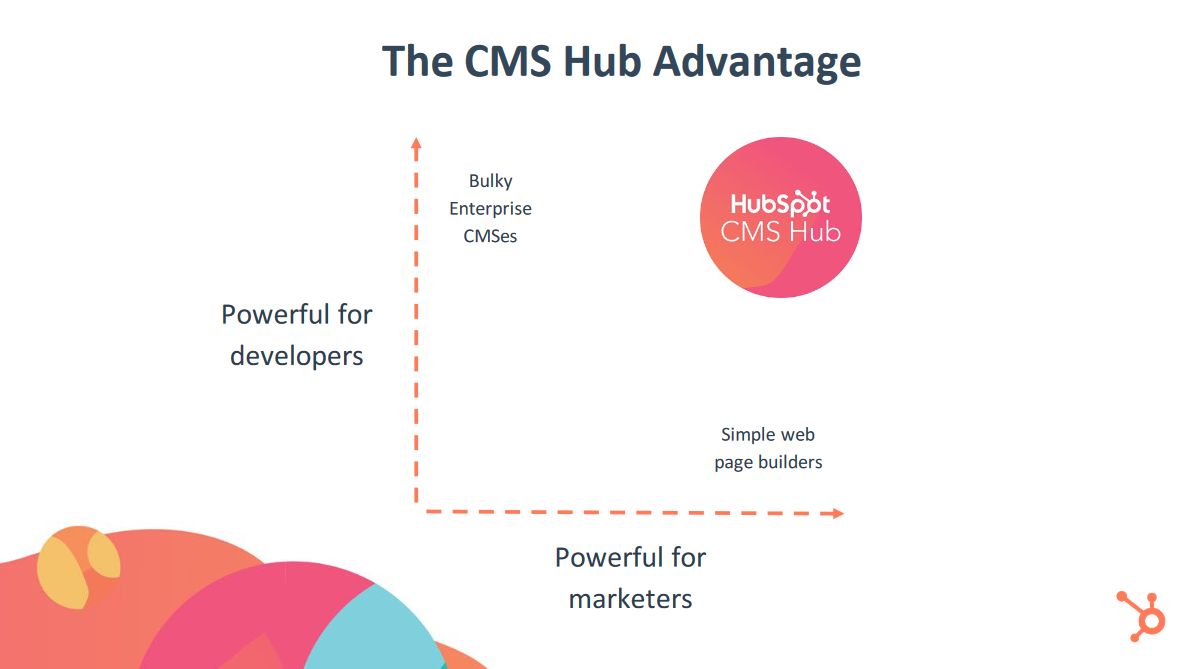
The CMS Hub Professional
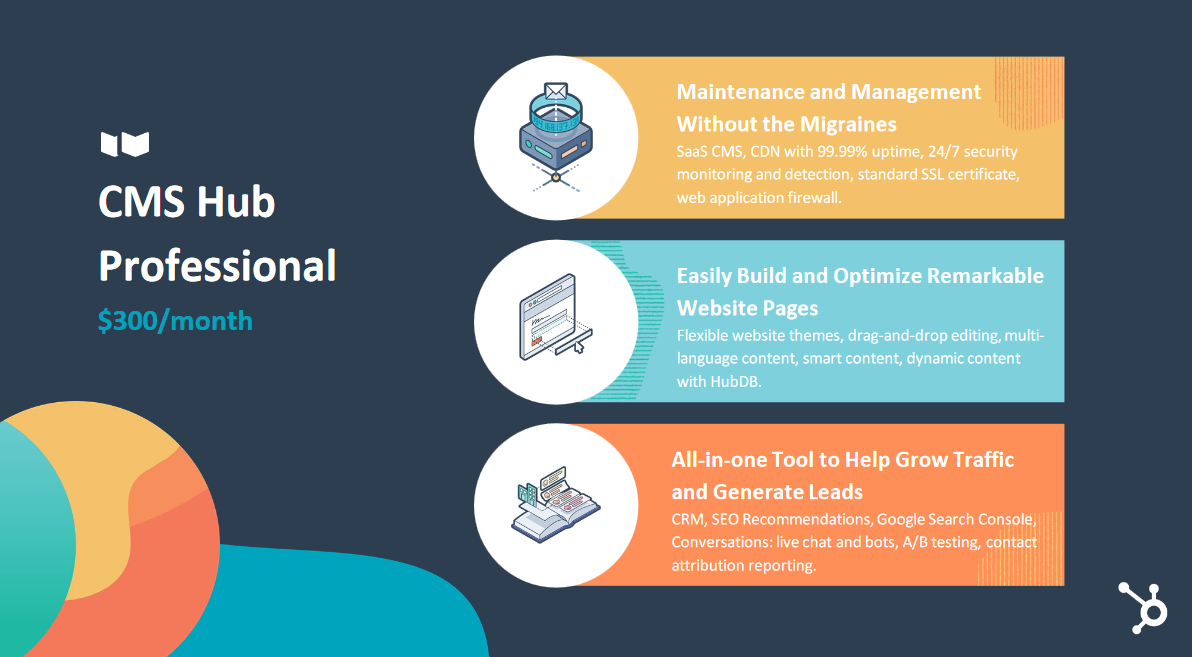
The CMS Hub Professional is a content management system designed to help businesses build and manage their website without the headaches often associated with website management. It offers several key benefits, including:
- Maintenance and Management Without the Migraines: CMS Hub Professional takes the stress out of website management and maintenance by providing businesses with a range of tools and features to manage their website with ease. This includes automated software updates, reliable hosting, and built-in security features to keep your website running smoothly and securely.
- Easily Build and Optimize Remarkable Website Pages: With CMS Hub Professional, businesses can easily create stunning website pages using the intuitive drag-and-drop page editor. This allows businesses to build pages quickly and efficiently, without the need for extensive technical knowledge. Additionally, CMS Hub Professional provides advanced optimization tools to help businesses improve their website's performance, including search engine optimisation (SEO) tools, smart content, and mobile optimization.
- All-in-one Tool to Help Grow Traffic and Generate Leads: CMS Hub Professional is an all-in-one tool designed to help businesses grow their traffic and generate leads. It includes a range of powerful features such as contact forms, lead capture tools, and lead nurturing workflows to help businesses attract, engage, and convert their website visitors. Additionally, CMS Hub Professional provides advanced analytics and reporting tools, allowing businesses to track their website's performance and make data-driven decisions about their marketing strategy.
The CMS Hub Enterprise
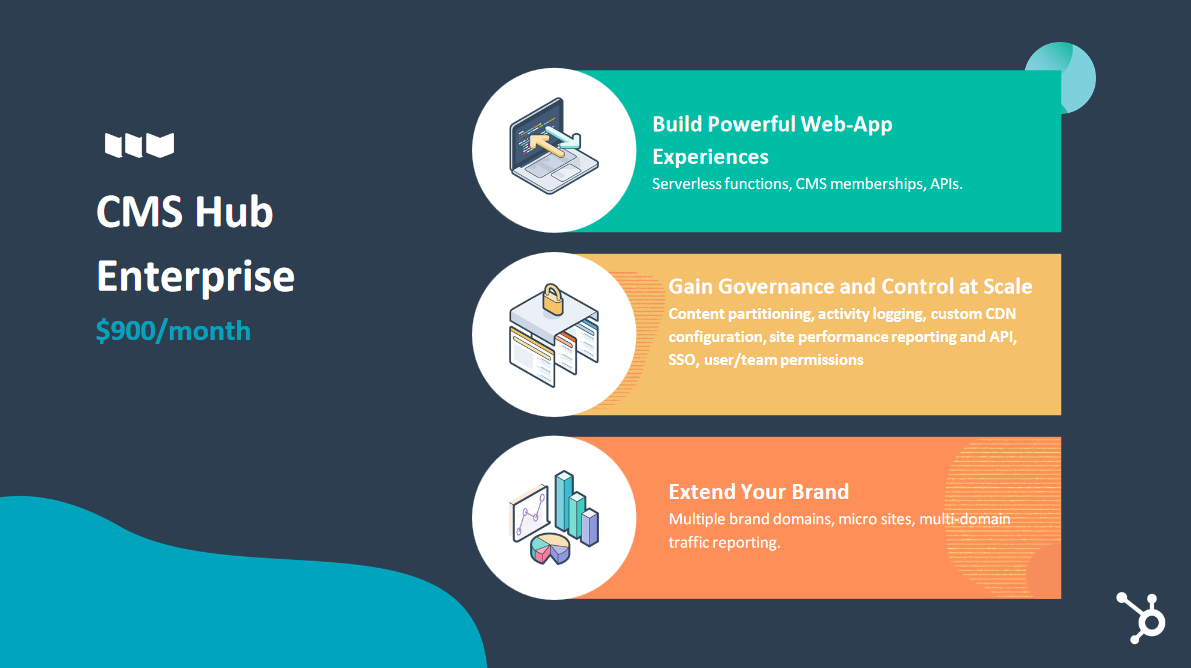
The CMS Hub Enterprise is a powerful content management system that provides businesses with a wide range of benefits, including the ability to build powerful web-app experiences, gain governance and control at scale, and extend their brand. Let's discuss each of these benefits in more detail:
- Build powerful web-app experiences: With CMS Hub Enterprise, businesses can create powerful web-app experiences that fully meet the needs of their users. This is possible thanks to the platform's flexible and scalable infrastructure, which allows businesses to create custom integrations, APIs, and workflows that automate complex business processes. Additionally, CMS Hub Enterprise provides businesses with advanced personalization and optimization tools, allowing them to create personalized experiences that increase engagement and conversions.
- Gain governance and control at scale: CMS Hub Enterprise provides businesses with robust governance and control features that allow them to manage their website at scale. This includes features such as content approval workflows, granular permissions, and auditing capabilities, which help ensure that content is accurate, consistent, and compliant. Additionally, CMS Hub Enterprise provides businesses with enterprise-level security features, including two-factor authentication, encrypted data storage, and secure hosting, ensuring that their website is always protected.
- Extend your brand: With CMS Hub Enterprise, businesses can easily extend their brand across all digital channels. This includes features such as multi-language support, SEO optimisation, and social media integrations, which help businesses reach new audiences and expand their digital footprint. Additionally, CMS Hub Enterprise provides businesses with powerful analytics and reporting tools, allowing them to track and measure the impact of their digital marketing efforts and make data-driven decisions about future campaigns.
Key Takeaways:
Here are some of the key takeaways from the presentation:
- User Experience (UX) is crucial for website performance: Creating a seamless user experience on your website can significantly impact user engagement and conversion rates. To optimise UX, focus on elements such as website speed, mobile responsiveness, clear navigation, and intuitive design.
- Website speed is a critical factor: Website speed is a critical factor in determining website performance, as it directly impacts user experience and search engine rankings. Use tools such as Google Page Speed Insights to analyse and optimise website speed, and highlight the importance of minimising page load times by compressing images and videos, minimizing HTTP requests, and using a content delivery network (CDN).
- SEO is essential for driving traffic: Create high-quality, relevant, and keyword-optimised content to improve search engine rankings. It is recommended that you use tools such as Google Search Console and Google Analytics to track website performance and identify opportunities for improvement.
- Website security is critical: Website security is a critical factor in website performance, as it can impact user trust and credibility, as well as search engine rankings. Use HTTPS encryption, regular backups, and strong passwords to protect your website from security threats.
- Website design and functionality matter: To create a peak-performing website, incorporate elements such as clear calls-to-action, easy-to-use forms, and engaging visual content.
In summary, creating a peak-performing website requires a focus on user experience, website speed, SEO, security, and design and functionality. By implementing the practical tips and insights provided in the video, website owners and developers can improve website performance and drive more traffic, engagement, and conversions in 2021 and beyond.


